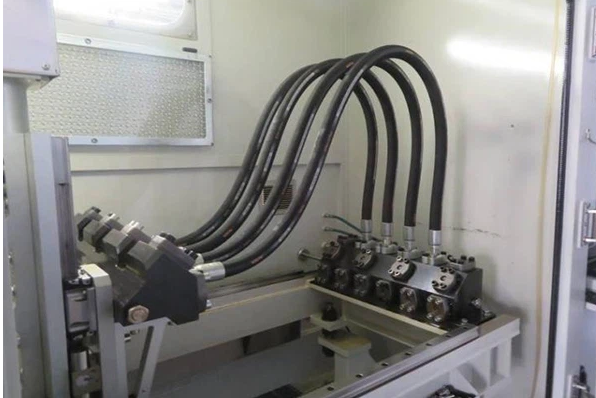Aug . 22, 2023 08:19 Back to list
How to do an impulse test for your hydraulic hose?
The pulse test is an important test performed on hydraulic hose to evaluate its durability and performance.It simulates the extreme pressure conditions and repetitive pulses that hydraulic hoses are subjected to during operation.
Here is a step-by-step guide on how to perform a hydraulic hose impulse test:

1) Prepare your test equipment: You will need a hydraulic test bench, hydraulic fluid, pressure gauge, stopwatch, and suitable connections for connecting the hoses to the test bench.
2)Be Safe: Before you start testing, make sure you follow all safety guidelines. Wear appropriate personal protective equipment (PPE) and make sure there are no obstacles or hazards nearby.
3)Connect the hose: Use the appropriate connector to securely connect one end of the hydraulic hose to the test bench. Make sure the connection is tight and free of leaks.
4)Fill the hose with hydraulic fluid: Make sure the hose is filled with the recommended hydraulic fluid. Make sure there are no air bubbles in the hose.
5)Set test parameters: determine the test pressure, test frequency and number of cycles required for the test. These parameters may vary according to hydraulic hose specifications and industry standards.
6) Apply pressure: Use the hydraulic test bench to gradually increase the pressure to the required test pressure. Monitor pressure with a pressure gauge.
7)Impulse Test: Once the desired test pressure is achieved, the impulse test is initiated by subjecting the hose to a series of rapid pressure surge cycles within the specified frequency range. This process simulates the actual working conditions of the hose.
8)Monitoring and Observation: Continuously monitor the hose for any signs of leaks, swelling, or other visual abnormalities during the pulse test. Make a note of the number of cycles the hose endured without failure. Observations: The hose is considered to have passed the impulse test if it can withstand the specified number of cycles without any failure or visible damage. If the hose fails prematurely, note the point of failure and evaluate potential causes of failure.
8)Evaluate performance: After completing the pulse test, evaluate the overall performance and durability of the hose based on the test results. Consider the number of cycles it will withstand, visual damage, and any other factors that may affect its reliability.
Keep in mind that manufacturer's guidelines and industry standards must be followed when performing pulse testing on hydraulic hose.
-
Thermoplastic Hose Chemical Resistance Fluid Compatibility
NewsJul.14,2025
-
Steel Wire Braid Hydraulic Hose Factory Production Process
NewsJul.14,2025
-
SAE Hydraulic Hose Specs Textile Reinforcement Layer Structure
NewsJul.14,2025
-
High Pressure Hydraulic Hose Factory CNC Bending Process
NewsJul.14,2025
-
China Wire Spiral Hydraulic Hose High Temperature Resistance
NewsJul.14,2025
-
Automotive Air Conditioning Hose Ozone Resistance Testing
NewsJul.14,2025
